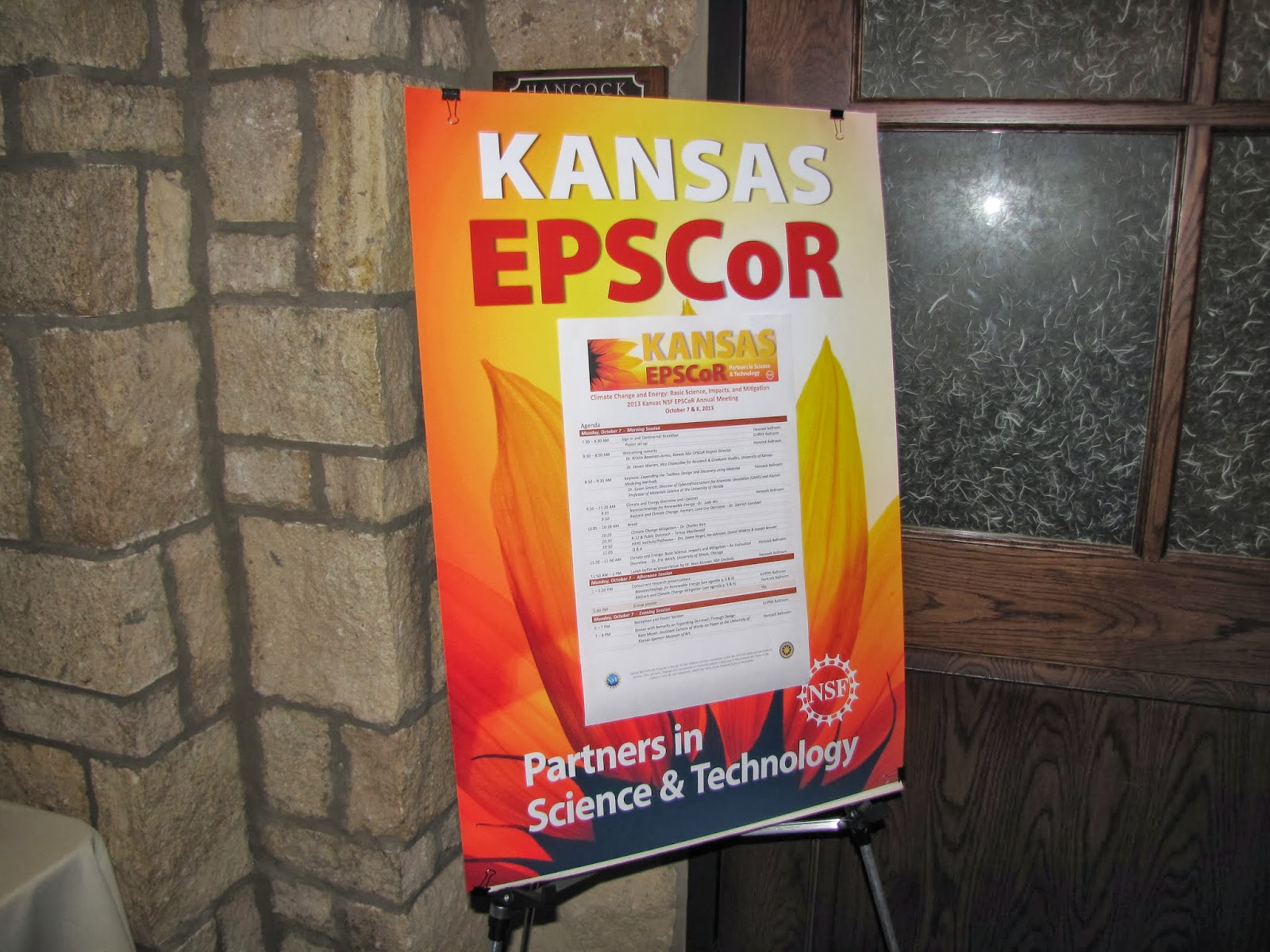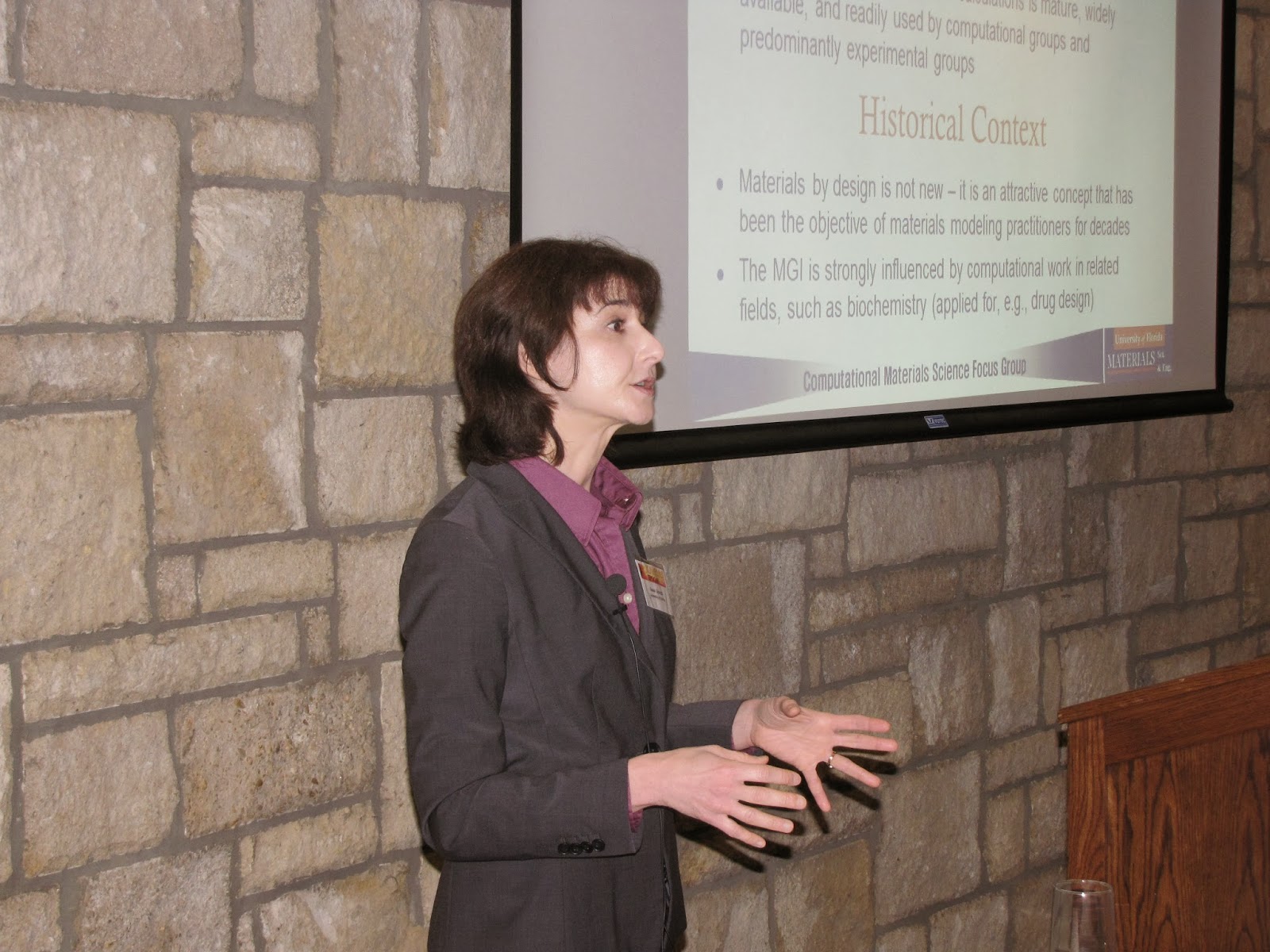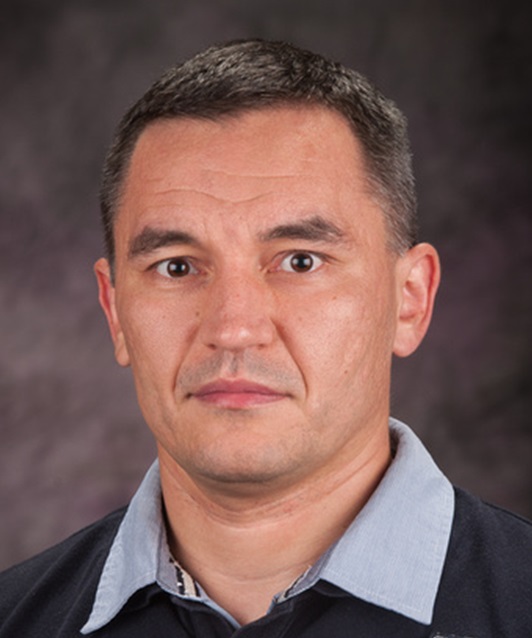Despite the government shutdown keeping several federal representatives from attending, the Kansas NSF EPSCoR 2013 Annual Meeting was a big success. Over 140 participants attended the two-day event titled
Climate Change and Energy: Basic Science, Impacts, and Mitigation.

The focus of the meeting was to feature the accomplishments of the NSF-funded project of the same name. As the project enters the fifth and final year, the emphasis of discussion was placed on its evolution over time, including research, collaboration, outreach, and sustainability for the future.
Dr. Steven Warren, Vice Chancellor for Research & Graduate Studies at The University of Kansas opened the meeting praising the program, led by
Dr. Kristin Bowman-James (Project Director and University Distinguished Professor of Chemistry at KU), as a model of how multi-disciplinary, multi-institutional projects should be run.

The keynote address was delivered by noted materials scientist,
Dr. Susan Sinnott, Director of Cyberinfrastructure for Atomistic Simulation CAMS) and Alumni Professor of Materials Science at the University of Florida. She discussed the evolution of some common modeling methods and their integration with cutting-edge experimental methods. New methods aid in the discovery and design of new materials to improve existing technologies or enable new applications. Such applications are in the context of nanomaterials and materials used for energy applications, including electronic devices, energy storage, and nuclear fuels.
The keynote topic set the tone for day where the research leaders for the Climate and Energy initiative followed with overview perspectives of their research accomplishments. The presentations demonstrated capacity-building, meeting research milestones, and creative methods for communicating the science by reaching out to community populations.
Dr. Debra Rolison, a physical chemist at the Naval Research Laboratory was the featured lunchtime speaker. She discussed the pervasiveness of gender inequality within the science and technology research community and the need to challenge the status quo with reasoned and bold arguments for change.
Sessions after lunch and the following morning included individual scientific presentations by the Climate and Energy faculty and student researchers. Subjects ranged from the development of solar electric and ultrathin film photovoltaic devices (solar cells) to using climate and water data for farmer decision making and land and crop management in Kansas.

The technical presentations of the day gave way to a casual reception and poster session where a wider range of students and faculty had a chance to display and discuss their research in an informal setting. The session featured almost 50 posters from scientists at Wichita State University, Kansas State University, University of Kansas, Haskell Indian Nations University, Emporia State University and Pittsburg State University. These posters demonstrated the breadth of Kansas NSF EPSCoR including more than just the climate and energy initiative but also education and diversity efforts and First Awards that kick-start the research programs for new faculty members in Kansas.

Participants at the evening's dinner banquet were treated to a unique design exhibit that grew from activities in the
Biofuels and Climate Change: Farmers' Land Use Decisions (BACC:FLUD for short) project.
Kate Meyer, Assistant Curator of Works on Paper at The University of Kansas Spencer Museum of Art, talked about the relationship between science and art and how it can be powerfully depicted through visual design. Meyer enlisted the help of
Dr. Patrick Dooley, professor of design at KU, and his students to create a series of posters that utilize graphic design principles to illuminate, translate, and communicate aspects of BACC:FLUD research and its relevance to Kansans.
The overall success of the meeting punctuates the excitement of such a large and carefully planned project that includes over 80 researchers and 150 students from across the state. Combined, the efforts of the project position Kansas to be able to provide sustainable solutions to global challenges.
 |
| Participants attending the Nanotechnology for Renewable Energy research symposium session. |
 |
| Participants attending the Biofuels and Climate Change Mitigation research symposium session. |
For more information about Kansas NSF EPSCoR and the Climate and Energy initiative, please visit
http://www.nsfepscor.ku.edu/ph6.html.
 Kansas NSF EPSCoR has released a request for proposals (RFP) for 2014 First Awards. This opportunity is for early-career faculty in the areas of climate or energy research at the Regents universities in the state.
Kansas NSF EPSCoR has released a request for proposals (RFP) for 2014 First Awards. This opportunity is for early-career faculty in the areas of climate or energy research at the Regents universities in the state.

















